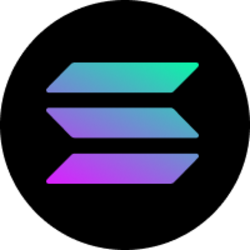It was in the late 1980s when ARPANET adopted TCP/IP protocol and from there, researchers began to assemble the “network of networks” that became the modern Internet. The online world then took on a more recognizable form later on, when computer scientist Tim Berners-Lee invented the World Wide Web.
Fast forward to the 21st century and we know what the internet has become. We can live without having a daily meal but not without the internet in this fast-moving, fully digital, and hyper-connected world. Internet is the new vehicle and data is the new fuel of present times.
Blockchain is poised to do the same. Bitcoin crossed $40,000 USD for the first time recently, so it’s again in the news. Bitcoin is just the most-known cryptocurrency and probably the first blockchain application. In this article, I will walk you through some core concepts of blockchain and cryptocurrencies. This article is written for beginners who are new to this world and want to learn about blockchain and cryptocurrencies.
What is Blockchain?
Don’t be spooked by the technobabble that people use to describe “blockchain.” A blockchain is just a database that records certain information. So how does a blockchain differ from a database?
Blockchain has certain features that make it very unique and different from a traditional database. In a traditional database, you store information in some structured (SQL) or unstructured (no-SQL) format that is stored in your disk or on some server where this database is running. This makes traditional databases centralized or under control by some authority. e.g. if you use WhatsApp, it stores. your data on Facebook’s database servers and Facebook has full control over it.
In the case of blockchain, it stores information together in groups, also known as blocks, that hold sets of information together. Blocks have certain storage capacities and, when filled, are chained onto the previously filled block, forming a chain of data known as the “blockchain.” All new information that follows that freshly added block is compiled into a newly formed block that will then also be added to the chain once filled.
Data that is stored on the blockchain is timestamped and immutable which makes it tamper-proof. Blockchain is also a decentralized system that means no one owns it. Yes, you heard it right, no single person or organization holds the blockchain data but it is rather distributed across thousands of machines that volunteer to participate in blockchain network for mutual benefit.
It is this difference that makes blockchain technology so useful – it represents an innovation in information registration and distribution that eliminates the need for a trusted party to facilitate digital relationships.
Yet blockchain technology, for all its merits, is not a new technology.
Rather, it is a combination of proven technologies applied in a new way. It was the particular orchestration of three technologies (the internet, private key cryptography, and a protocol governing incentivization) that made bitcoin creator Satoshi Nakamoto’s idea so useful.
What is Bitcoin?
The goal of blockchain is to allow digital information to be recorded and distributed, but not edited. Blockchain technology was first outlined in 1991 by Stuart Haber and W. Scott Stornetta, two researchers who wanted to implement a system where document timestamps could not be tampered with. But it wasn’t until almost two decades later, with the launch of Bitcoin in January 2009, that blockchain had its first real-world application.
Bitcoin is a cryptocurrency that is built on a blockchain. In a research paper introducing the digital currency, Bitcoin’s pseudonymous creator, Satoshi Nakamoto, referred to it as “a new electronic cash system that’s fully peer-to-peer, with no trusted third party.”
The key thing to understand here is that Bitcoin merely uses blockchain as a means to transparently record a ledger of payments, but blockchain can, in theory, be used to immutably record any number of data points. As discussed above, this could be in the form of transactions, votes in an election, product inventories, state identifications, deeds to homes, and much more.
Currently, there is a vast variety of blockchain-based projects looking to implement blockchain in ways to help society other than just recording transactions. One good example is that of blockchain being used as a way to vote in democratic elections. The nature of blockchain’s immutability means that fraudulent voting would become far more difficult to occur.
For example, a voting system could work such that each citizen of a country would be issued a single cryptocurrency or token. Each candidate would then be given a specific wallet address, and the voters would send their token or crypto to whichever candidate’s address they wish to vote for. The transparent and traceable nature of blockchain would eliminate the need for human vote counting as well as the ability of bad actors to tamper with physical ballots.
Some more use cases of Blockchain technology
As with every hype, people want to apply it everywhere. But where does it actually make sense?
You can see the blockchain as a very special database. It only supports insertions, but no deletions or edits. It’s managed by the network. Depending on the protocol, this can mean that the data in the blockchain is immutable. The data is distributed.
There are some properties where blockchain will never be able to compete with well-known database systems:
- Insertion Speed: Visa is able to handle 65k transactions/second (source), Bitcoin can only handle 7 transactions/second (source). That means, without the Bitcoin Lightning Network (BLN) extensions. With the BLN, the system can process over 10k transactions/second (source).
- Latency: Probably less than 5 seconds for Visa, but about 1 hour for Bitcoin (source).
- Queries: We have lots of database types. Especially relational databases allow very complex queries. You will not have that with the blockchain.
Those alone already show that you want traditional database systems for a lot of problems. So let’s see where the Blockchain shines:
- Cryptocurrencies are probably the best-known examples of Blockchain technology as Bitcoin made the whole topic famous. The idea here is that you have a digital asset that cannot be forged. It’s impossible to create fake bitcoins. The government cannot decide to print new Bitcoins. The process is transparent and open to everybody: Every person and every organization. Privacy here is an interesting topic; if you’re interested I would write an own article about that. It also has challenges. For example, it’s impossible to get Bitcoin back if you lose your wallet. They are gone. For everybody. Forever. Or if somebody steals your computer and transfers them. If you get hacked. There is no court that can undo it.
- Supply Chain Management: Many brands nowadays want to make their supply chain more transparent. They want to prove to the customers where their product came from; “traceability” is the buzzword. They also want to make sure that counterfeits can be identified. So they upload data and about the origin of their products at every step. Those steps have timestamps and are very fine-granular. One problem the blockchain doesn’t solve is that all of the uploaded data could be faked.
- Real Estate: I know that in Germany we have pretty good maps of the country, of ownership of every single piece of land. The process of buying and selling land includes a trusted party — a notary. The notary gets 1.5% of the amount you pay for the land. A square meter of land costs about 4000 EUR in Munich. A small house has about 300m² — so you would pay 1.2 million EUR for the land and thus 18k for the notary. This is a pretty good incentive to get rid of the notary, isn’t it? The other case is that you might not have such a process in all countries.
- Capital Markets: Blockchain-based digital securities provide cost advantages because they can be issued and exchanged without middlemen (source). The numbers in this source are pretty crazy: Cashlink and Fiona estimate that cost savings from 35% to 65% for tokenization compared to traditional securitization is possible.
- Energy can be traded using blockchain. Read When Energy Trading meets Blockchain in Electrical Power System: The State of the Art to learn more.
Blockchain technology is often described as the backbone for a transaction layer for the internet, the foundation of the Internet of Value. Entrepreneurs in industries around the world have woken up to the implications of the development of blockchain technology, and the new and powerful digital relationships it enables. The idea that cryptographic keys and shared ledgers can incentivize users to secure and formalize digital relationships has provided the impetus for governments, IT companies, banks and others to seek new and innovative ways to build this transaction layer for the internet.












[…] Cryptocurrencies are very exciting but also very volatile when it comes to investment. Please make sure you read enough before investing. […]